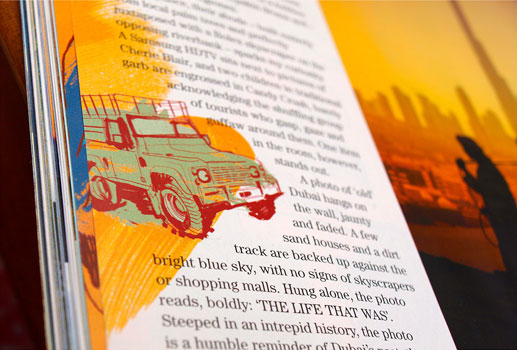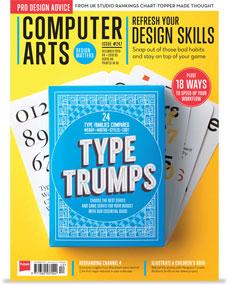Why we're heading towards an intellectual property apocalypse
Don't be a digital licensing zombie, warns freelancer Ben Tallon.
London-based freelance illustrator and art director Ben Tallon argues for clearer guidelines to guard against an intellectual property apocalypse...

One of the most self-assured creative pros I know calls me up. He's anxious. I'm worried because this usually happens the other way around. It must be serious.
He reads out a contract – the same contract he signed for a client around 10 years ago as part of an editorial illustration commission. In 2005, signing over 'digital' rights meant nothing more than the unlikely eventuality that a magazine may also publish the article on some online blog equivalent.
Now, in 2015, I've just finished enjoying the second issue of Eleven: Football Culture Magazine, a new publication that exists in an exclusively digital, fully interactive space on my Google Nexus device.
I flopped on the quiz and had the refreshingly novel luxury of watching footage of goals that had been detailed in a feature, via the YouTube-embedded windows on the page. Oh how the landscape has changed.
Dated contracts
My friend's contagious concern has been triggered by this dated contract. We exist in a world enmeshed in a technological revolution. The way we digest content that once lived more or less entirely in the print world, has changed.
What this means is, visual communicators of all disciplines find themselves in a grey area, where nobody understands the licensing of images and moving images in a digital environment.
Daily design news, reviews, how-tos and more, as picked by the editors.

What in 2005 might have been a standard add-on term allowing fair digital use, now opens the creator of a work up to exploitation.
The trouble is, those who have commissioned the work are no better clued up than we are because we're all coming to terms with the new. It's a bit like the 'prejudice or ignorance?' argument when people debate immigration.
They are given contracts by a legal team that have yet to have terms updated to reflect this new digital frontier and if signed by unwitting illustrators, photographers and filmmakers, could see tens of thousands of pounds' worth of content usage splurged across LED screens on high streets, website headers and trans-media marketing campaigns.
All of this for the same fee as a single-use editorial commission. The trouble is, once we all sign, ignorance leads to these terms becoming industry standard, and then we're all screwed.
It is crucial that creative content providers, agencies and freelancers politely educate clients and specify exact electronic terms in a commission. That way, both parties' interests are protected.
If we don't, it's not an exaggeration to say the digital revolution could quickly become an apocalypse to those who make a living off licensing their intellectual property.
Words: Ben Tallon
Freelance illustrator Ben is also the author of Champagne and Wax Crayons: Riding the Madness of the Creative Industry.

This article first appeared in Computer Arts issue 247, a typography special issue featuring a series of Type Trumps cards designed by Rick Banks – on sale now.
Liked this? Try these...
- 6 designers' bad habits – and how to avoid them
- 5 psychological tips to use on tricky clients
- Download the best free fonts

The Creative Bloq team is made up of a group of art and design enthusiasts, and has changed and evolved since Creative Bloq began back in 2012. The current website team consists of eight full-time members of staff: Editor Georgia Coggan, Deputy Editor Rosie Hilder, Ecommerce Editor Beren Neale, Senior News Editor Daniel Piper, Editor, Digital Art and 3D Ian Dean, Tech Reviews Editor Erlingur Einarsson, Ecommerce Writer Beth Nicholls and Staff Writer Natalie Fear, as well as a roster of freelancers from around the world. The ImagineFX magazine team also pitch in, ensuring that content from leading digital art publication ImagineFX is represented on Creative Bloq.
